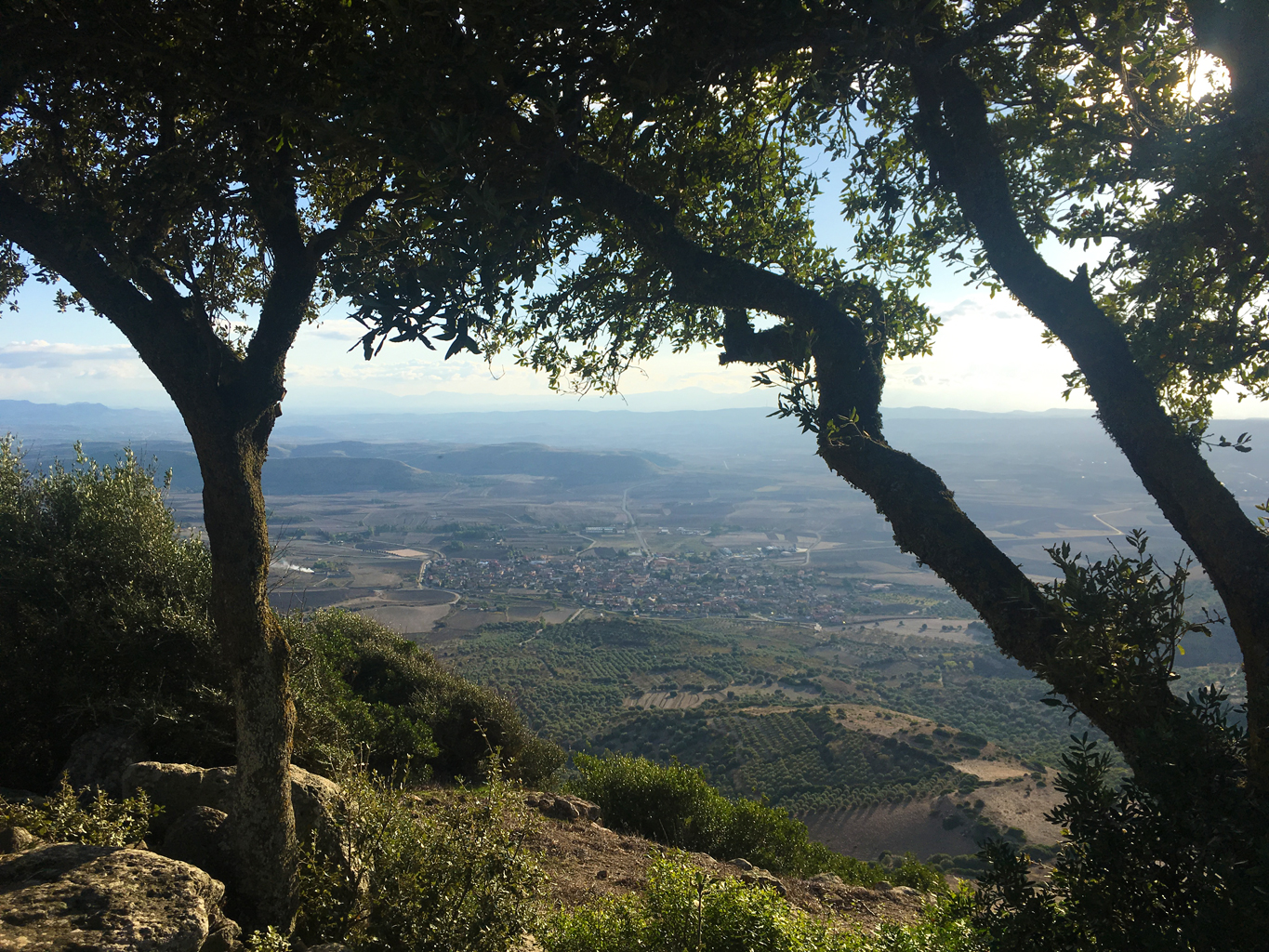
331/377: Tuili
INSPIRATION

I wake up already in Tuili, at the b&b Il Giardino da Pina, where I arrived last night having not found hospitality in Pauli Arbarei. Today’s visits and hospitality are organizsd by the Pro Loco, whose president Matteo welcomes me to the headquarters and tells me some facts about this village.
Tuili, at the foot of the Giara di Gesturi, has a well-preserved historic centre, ancient Campidanese houses, with beautiful portals, and above all noble buildings in excellent condition. All this thanks to the post-war economic boom that made many people leave, avoiding the building havoc that took place from the 1950s onwards. Furthermore, the territory is extremely fertile because it is crossed by the waters that descend from the Giara. The cultivation of olive trees began in the times of the Spaniards and is still flourishing.

We head to the parish church of San Pietro, from the fifteenth century but with renovations from the eighteenth century, which can be reached from the square through a suggestive stone portico. Inside are the impressive Retable of San Pietro, the work of the Master of Castelsardo, the Retable of Pentecost, and two ancient eighteenth-century organs, one of which has been completely restored by Mancini.
On the opposite side of the square, beyond the stone portal, is the Villa Asquer, built by the architect Gaetano Cima. Five thousand square meters of surface, it was the home of the Marquis Pes and then passed to his nephew Don Gavino Asquer. An immense courtyard houses a restaurant where occasionally wedding dinners are held. There was also a private cinema in a wing of the house (Matteo tells me that later two cinemas opened in Tuili!)

The villa houses two museums: on the ground floor the Oil Museum, which illustrates the olive and oil production activities promoted by Don Gavino Asquer. Among the peculiarities, the description of the cure against the “St. Anthony’s fire” desease, with oil and sparks, which is still practiced by swineherds. Then the oil mill room, with all the machinery.

A room with a fortepiano introduces us to the second exhibition space, on the first floor, the Museum of Sardinian Musical Instruments. I am happy to find this space, after the disappointment felt a year ago in Tadasuni for having heard of the closure of their museum of musical instruments. The collection is huge, instruments of all kinds but especially launeddas in abundance, and music by maestro Franco Melis spread from the speakers.
On the other side of the village is the church of Sant’Antonio Abate, with white walls and in Aragonese style, almost like a Mexican postcard. Inside, sober, there is a beautiful wooden altar. Once there was also a monastery here which was later abandoned due to the outbreak of a malaria epidemic. The monks moved to the monastery of Genoni (which I visited a few weeks ago).

In the afternoon Matteo takes me to the Giara di Gesturi, but here I prefer to call the Giara di Tuili as the summit is divided between the municipalities of Gesturi, Genoni, Setzu and Tuili. The highest point, Punta Zepparedda, 609 meters above sea level, still retains the trigonometric point detected by Lamarmora, and the largest swamp, Pauli Majori, also fall into this area.
On the plateau, privately owned horses graze, which were once used for threshing, and for rodeos, as was also the case with Genoni. We walk up to the remains of the Santa Luisa nuraghe where the homonymous church stands. This area was frequented from pre-Nuragic times, given the findings of obsidian, up to Roman times as shown by the remains of pottery.

We continue through the Morisia Botanical Garden, a green area within which there are flower beds containing various species of Sardinian flora and in particular of this area. The season is not the best, and I plan to return here in the spring when you can admire an explosion of colours.
We arrive as far as the Tuturuddu Nuraghe, yet another testimony of the importance of this hill guarding the whole territory. From up here I can admire, I believe for the last time on this trip, the whole territory of the Marmilla, managing to locate the palace of Barumini in the distance, not far from which the Sardegna in Miniatura park is located, in the territory of Tuili, but where I won’t have time to go this time… one more reason to come back here!
SOUND FRAGMENTS
SARDINIAN SHORT STORIES
During the days I note several stories from which I hope to be able to draw interesting material for my Sardinian Short Stories. I here report the notes of the day in Tuili (not revised and which I deliberately decide to leave in their original form):
“Dead guy under a stone collapsed from the Giara (another legend in common with villages in the area, eg gonnoscodina)
only village (…also others in the area) where for sant’antonio’s day (celebrated twice) you cannot light the bonfire because people don’t want to (when it is done, misfortunes happened). Not even fireworks. A bonfire is made for san sebastiano
during the procession one guy said “oh bearded Saint Anthony, come and I’ll offer you a drink” and … bang … hit by a lightening
or one guy wanted to enter the church on horseback which reared up on the door leaving the marks of the hooves on the jambs ”.
I think these few notes can remain like this, giving a good sense of the popular beliefs that animate these territories!